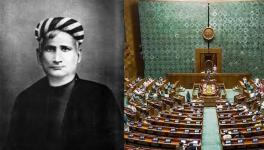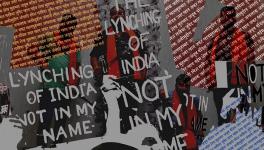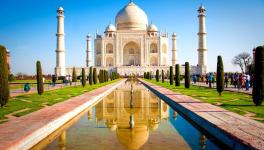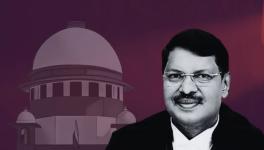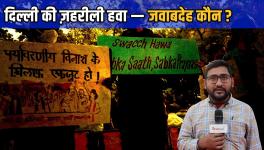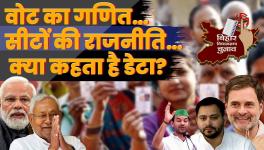Kalyan Singh, RSS and OBC Politics
Image Source: The Print
Kalyan Singh, twice the chief minister of Uttar Pradesh and later the Governor of Rajasthan and Himachal Pradesh, breathed his last on Saturday, 21 August. Rich tributes have flowed in, mainly from the BJP camp. He was the OBC “face” of the Bharatiya Janata Party. India will remember him for the demolition of the Babri mosque under his watch. He was the chief minister of Uttar Pradesh from 24 June 1991 to 6 December 1992, the day the mosque was razed.
During a meeting of the National Integration Council, a body that is dormant during BJP rule, Singh had promised to protect the mosque. He submitted an affidavit to the courts that the state would make every effort to preserve the structure. Yet, when the demolition began, he instructed the police forces to take it easy, allowing the “kar sevaks” to go on a rampage. All this while, from a stage erected near the site of the Babri mosque, BJP leaders LK Advani, Murli Manohar Joshi and Uma Bharti were delivering “fiery” speeches.
Later, Singh was sentenced to one day in jail for contempt of court, which he wore as a badge of honour. Many coined the phrase “Hindu Hriday Samrat” for him. He would proclaim that for the cause of Lord Ram, he is willing to do anything and has no regrets.
The BJP had an upper-caste image for the longest time. Leaders such as Kalyan Singh, Uma Bharti and Vinay Katiyar came to represent its willingness to accept and promote members from backward communities.
Singh had social reach with his Lodh community and the Bind, Mallah, Kumbhar, Kashyap and Kurmi social groups. During the crucial 2014 General Election, he played a unique role, turning out the “Kalyan Singh formula”. This formula drummed up a political unity of so-called non-Yadav OBCs, to weld them into the BJP-Sangh scheme of things. It yielded rich electoral dividends to the BJP. Trained in RSS shakhas, Singh was a discovery of Nanaji Deshmukh and later Lal Krishna Advani, who secured more ambitious political roles for him.
His journey began with “Ram Rath Yatras”, which became more intense after India implemented the Mandal Commission report, which paved the way for reservations in educational institutions for members of backward communities. As an RSS member, he opposed reservations. Yet, for electoral reasons, the RSS combine did not want to appear opposed to it. So, Singh met RSS chief Bhaurao Deoras, who told him, “The more intense the Ram Temple movement gets, the lesser would be the implications of Mandal Report implementation.” The strategy was to “unite people as Hindus” to paper over the distinctions of caste. The former prime minister and BJP leader Atal Bihari Vajpayee had also said, “They brought Mandal: so we had to bring kamandal”.
That was the first message from the RSS combine, to the upper-caste voters, that it opposes reservations. Through Ram Rath yatras and the Ram temple campaign, the RSS consolidated its hold over Hindu voters. RSS agenda is visibly anti-minority, but that is just on the surface: Its core ideology seeks to retain birth-based hierarchies of caste and gender. It was born against the backdrop of conservative opposition to women getting educated and the stirrings of Dalit resistance to caste-based discrimination. Jyotirao Phule began his campaign to promote education among Dalits and help them escape land slavery and go to cities to work at around the same time. The movement against landlord-Brahmin hegemony in the Vidarbha area was inspired by the teachings of Phule (and then BR Ambedkar).
KB Hedgewar, the founding Sangh supremo, launched his organisation in the same area to glorify Hinduism as a pristine ancient way of life. The second RSS chief, MS Golwalkar, upheld the Manu Smriti, which is, in short, a manual for caste and gender hierarchy.
The RSS first consolidated itself through the vast network of swayamsevaks and pracharaks indoctrinated with these hierarchies. The past had many great things, but the RSS keeps assiduously mum on the plight of women and Dalits in the past. For them, Gautama Buddha or the Bhakti saints are a footnote in the ‘great Hindu civilisation’.
Today, the core teaching that society needs to be hierarchical has not changed for the RSS. Its members believe in Hindu unity while keeping internal inequality intact. So, at a theoretical level, all castes are presented as equal and the strength of Hindu society. However, should members of these castes require or demand affirmative action to achieve substantial equality, it is anathema for Hindu nationalists. That is why it has multiple strategies to co-opt the non-elite communities in the grand scheme of Hindu nationalist society. That is why Dalit and OBC members and supporters are essential to the BJP-RSS combine. In the 2019 Lok Sabha election, the Congress party could garner 15% of OBC votes while BJP bagged 44%. The core reason is that the RSS and BJP excel at appropriating marginalised and subaltern identities. It is done by adopting an anti-Muslim or anti-Christian slant. Once it establishes itself, it works to abolish reservations.
While Ambedkar spoke of the annihilation of caste, the RSS-promoted organisations such as the Samajik Samrasta Manch speak of harmony between castes—as they are and where they are.
Even Prime Minister Narendra Modi has sought to take advantage of his birth in an OBC family, even as his politics is Hindu nationalism. So did Kalyan Singh give political space to some OBC communities under the Hindu nationalism umbrella. Today, what Kalyan Singh began has been supplemented by the grassroots work of providing the marginalised a “respectable identity”, not concrete rights or justice. That is how the BJP continues to draw supporters, while the OBC communities that vote for it do not get equal access to education, jobs and employment.
The author is a social activist and commentator. The views are personal.
Get the latest reports & analysis with people's perspective on Protests, movements & deep analytical videos, discussions of the current affairs in your Telegram app. Subscribe to NewsClick's Telegram channel & get Real-Time updates on stories, as they get published on our website.









